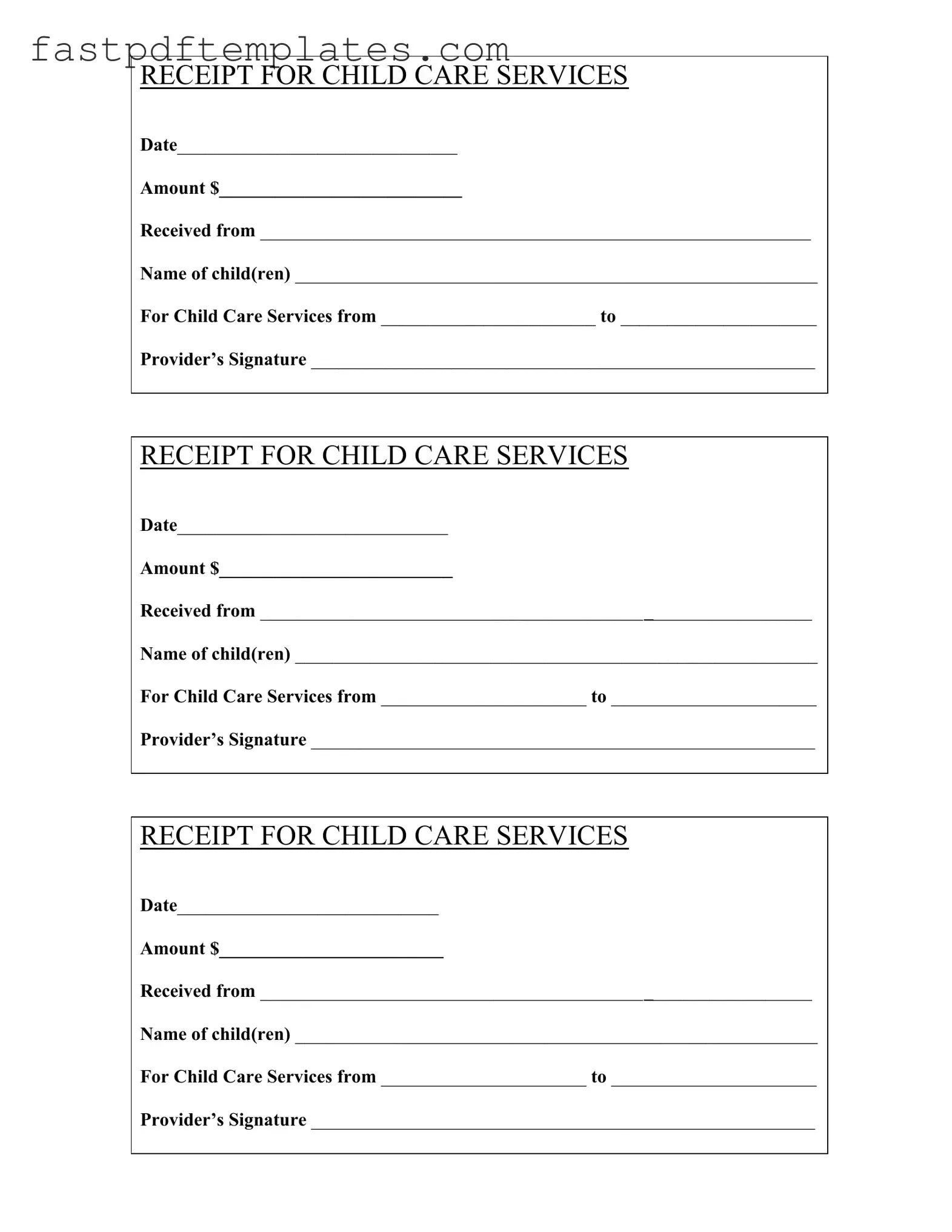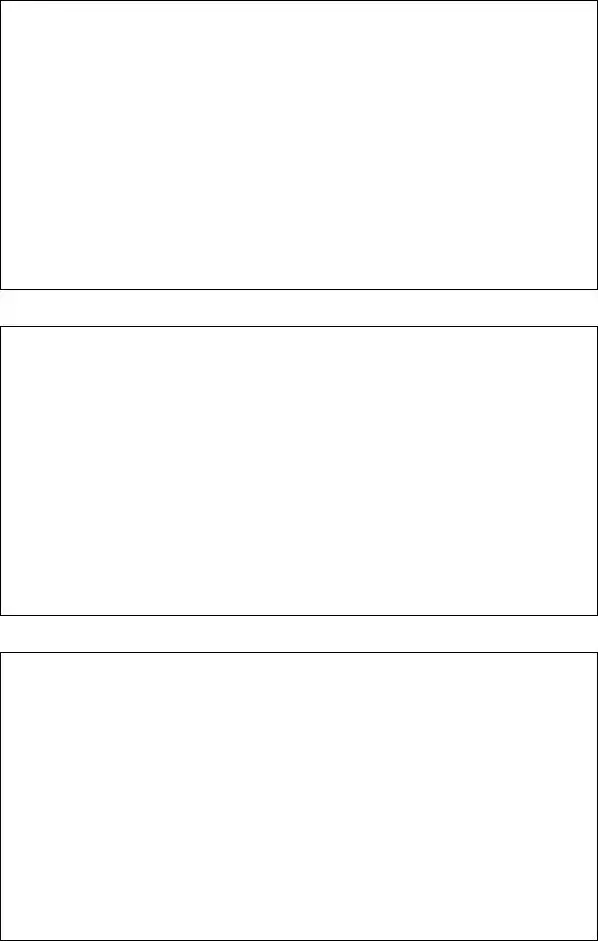The first document similar to the Childcare Receipt form is the Tuition Receipt. This receipt serves as proof of payment for educational services provided by schools or educational institutions. Like the childcare receipt, it includes essential details such as the date of payment, the amount paid, and the name of the student. Both documents function as important records for parents, especially during tax season, as they may qualify for educational tax credits.
Another comparable document is the Medical Receipt. When you visit a healthcare provider, you receive a medical receipt that outlines the services rendered and the amount paid. This document, much like the childcare receipt, includes the date, the total amount, and details about the services provided. Both types of receipts are crucial for parents seeking reimbursement from insurance companies or for tax deductions related to medical expenses.
The Rental Receipt is also similar in function. When renting a property, landlords provide tenants with a rental receipt to confirm payment. This document typically contains the date, the amount paid, and the name of the tenant. Just as with childcare receipts, rental receipts serve as important proof of payment, which can be essential for tax purposes or disputes regarding rental agreements.
Next, we have the Payment Receipt for Services. This document is issued by service providers, such as plumbers or electricians, after payment is made. It includes similar information: date, amount, and a description of the services provided. Both the childcare receipt and service payment receipts help individuals keep track of their expenses and may be necessary for record-keeping or tax deductions.
The Donation Receipt is another document that shares similarities with the Childcare Receipt. Charitable organizations issue this type of receipt when a donor makes a contribution. It includes the date, the amount donated, and the name of the donor. Like childcare receipts, donation receipts are vital for individuals looking to claim tax deductions for charitable contributions.
The Invoice is also relevant here. While invoices are typically sent before payment is made, they serve a similar purpose by detailing the amount owed for goods or services. Invoices contain the date, the total amount due, and a description of the items or services provided. Both invoices and childcare receipts help individuals manage their finances and maintain accurate records.
Next, consider the Utility Bill. Utility companies send these bills to customers for services like electricity, water, or gas. They include the date, the amount due, and the name of the account holder. Similar to childcare receipts, utility bills serve as proof of payment and can be essential for budgeting and financial planning.
Another related document is the Travel Expense Receipt. When traveling for business or personal reasons, individuals often collect receipts for expenses incurred, such as hotel stays or meals. These receipts provide essential details like the date, amount spent, and purpose of the expense. Just like childcare receipts, travel expense receipts help individuals track spending and may be used for reimbursement or tax deductions.
Lastly, the Payroll Receipt is worth mentioning. Employees receive this document from their employers, detailing their earnings and deductions for a specific pay period. It includes the date, the amount earned, and the employee's name. Similar to childcare receipts, payroll receipts are crucial for individuals to understand their financial situation and for tax reporting purposes.

